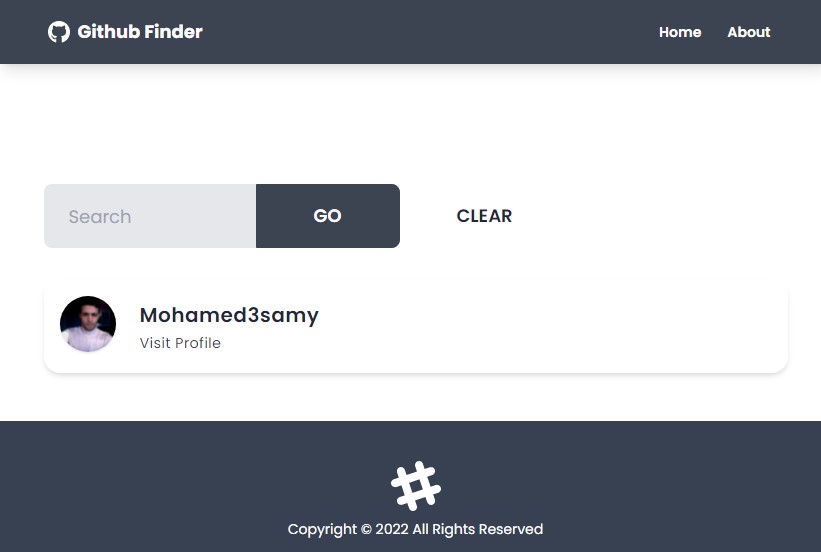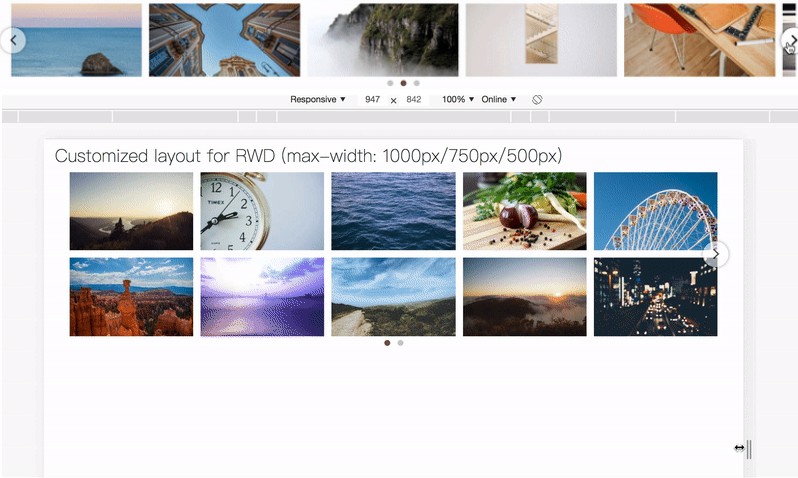React Photo Album
React Photo Album
React Photo Album is a responsive photo gallery component for React. React Photo Album supports rows, columns, and masonry layouts. Inspired by react-photo-gallery, re-engineered from the ground up.
Overview
- Built for React: works with React 17 and 16.14.0+
- SSR friendly: produces server-side rendered markup that looks pixel perfect on the client even before hydration.
- Responsive images: responsive images with automatic resolution switching are supported out of the box.
- Feature packed: supports 3 layout options (rows, columns and masonry), responsive images, custom data attributes
and is fully configurable and customizable. - TypeScript: type definitions come built-in in the package.
- Performance: it was built with performance in mind in order to support large photo albums and silky smooth layout
adjustments.
Examples
Rows

Columns

Masonry

All examples are available on CodeSandbox.
Installation
npm install react-photo-album
or
yarn add react-photo-album
Minimal Setup Example
import PhotoAlbum from "react-photo-album";
const photos = [
{
src: "/images/image1.jpg",
width: 800,
height: 600
},
{
src: "/images/image2.jpg",
width: 1600,
height: 900
}
];
<PhotoAlbum layout="rows" photos={photos} />
CDN
To install React Photo Album on a static website via CDN, follow one of the CDN examples.
- Unpkg: https://unpkg.com/react-photo-album
- JSDelivr: https://www.jsdelivr.com/package/npm/react-photo-album
- Skypack: https://www.skypack.dev/view/react-photo-album
How It Works
Rows Layout
Rows layout fills the rectangular container space by arranging photos into rows that are similar in size, with the height of each row being as close to the targetRowHeight as possible. This layout uses an algorithm adapted from the Knuth and Plass line breaking algorithm. To calculate the single best layout, it uses Dijkstra's algorithm to find the shortest past in a graph where each photo to break on represents a node, and each row represents an edge. The cost of each edge is calculated as the squared deviation from the targetRowHeight. This algorithm produces rows that are similar in height and photos that are not being stretched or shrunken abnormally (as is what happens in a naive implementation). It solves the issue of panoramas shrinking rows or having stragglers or stretched images in the last row, instead creating a justified grid. The graph is being built as the shortest path is being calculated to improve algorithm's performance, so the entire adjacency list is not calculated ahead of time.
Columns Layout
Columns layout fills the rectangular container space by arranging photos into a predefined number of columns, determined by the columns parameter. This layout uses an algorithm very similar to the one described above, but instead of Dijkstra's algorithm, it uses a dynamic programming algorithm to find the shortest path of length N in a directed weighted graph.
Masonry Layout
Masonry layout arranges photos into columns of equal width by placing each photo into the shortest column. This layout does not completely fill the rectangular container space, but the columns end up being as close in height to each other as possible.
Responsive Images
React Photo Album automatically generates sizes and srcset image attributes. In the case of SSR, React Photo Album includes sizes and srcset image attributes in the server-rendered markup, allowing browsers to pick images of the most appropriate resolution depending on their viewport size.
SSR
React Photo Album extensively uses CSS flexbox and CSS calc function to calculate the dimensions of images on the client. Unlike its predecessor, React Photo Album avoids setting the exact dimensions of images in pixels. Thanks to this approach, server-side rendered markup looks pixel-perfect on the client even before hydration (or even when JavaScript is completely disabled in the browser). React Photo Album calculates spacing, padding, columns, and other responsive parameters on the server-side using the defaultContainerWidth value, which is set to 800px by default. Keep in mind that responsive parameters may contribute to cumulative layout shifts during the initial page load. If CLS becomes an issue in your case, you may want to consider using hard-coded values for columns, spacing , padding, etc., instead of the default responsive values.
ResizeObserver
React Photo Album relies on ResizeObserver to respond to container size changes (i.e., when the browser window gets resized, device orientation changes or page layout causes a shift in container dimensions). React Photo Album no longer bundles ResizeObserver polyfill as part of the library since, as of January 2022, over 91% of browsers support it natively. If your use case requires you to support some older browsers, you can accomplish this by either installing a global ResizeObserver polyfill or by supplying a ponyfill via the resizeObserverProvider parameter.
Credits
- Thanks to Sandra G (aka neptunian) for authoring the original react-photo-gallery library that served as inspiration and foundation for react-photo-album.








